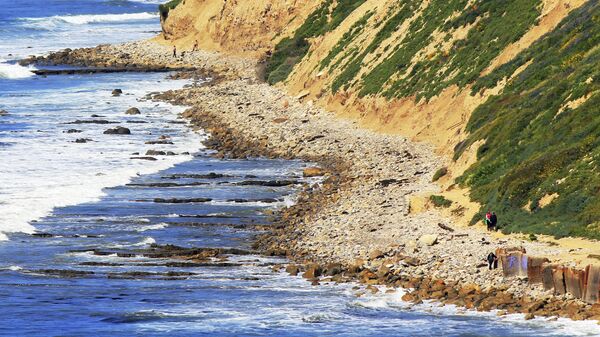"Using a newly-developed computer model called 'CoSMoS-COAST' (Coastal Storm Modeling System – Coastal One-line Assimilated Simulation Tool), scientists predict that with limited human intervention, 31 to 67 percent of Southern California beaches may become completely eroded (up to existing coastal infrastructure or sea-cliffs) by the year 2100 under scenarios of sea-level rise of one to two meters," the USGS wrote in a statement on Monday.
The model considered the movement of sands due to currents, and the USGS says that it can be applied to "virtually any coastal setting."
"Although shoreline change is very hard to predict, scientists are confident in the accuracy and reliability of the model's predictive capability applied to the forecast period (2010-2100), because of how accurately the model is able to reproduce the historical shoreline change between 1995 and 2010," the USGS statement read.
"Beaches are perhaps the most iconic feature of California, and the potential for losing this identity is real," study lead Sean Vitousek said in a statement. "The effect of California losing its beaches is not just a matter of affecting the tourism economy. Losing the protecting swath of beach sand between us and the pounding surf exposes critical infrastructure, businesses and homes to damage."
Vitousek was a postdoctoral fellow at the US Geological Survey when he led the study, and he is now a professor at the Department of Civil & Materials Engineering at the University of Illinois at Chicago. "Beaches are natural resources, and it is likely that human management efforts must increase in order to preserve them," he continued.
"Beaches in Southern California are a crucial feature of the economy, and the first line of defense against coastal storm impacts for the 18 million residents in the region," said USGS geologist and coauthor, Patrick Barnard.
"This study indicates that we will have to perform massive and costly interventions to preserve these beaches in the future under the erosive pressures of anticipated sea level rise, or risk losing many of the economic and protective benefits beaches provide."
Seventy-two percent of SoCal's beaches are larger now than they were a century ago due to human efforts to nourish and enlarge beaches, according to the USGS.
"The prospect of losing so many our beaches in Southern California to sea level rise is frankly unacceptable. The beaches are our public parks and economic heart and soul of our coastal communities. We must do everything we can to ensure that as much of the iconic California coast is preserved for future generations," said California Coastal Commission Executive Director John Ainsworth in a statement.




